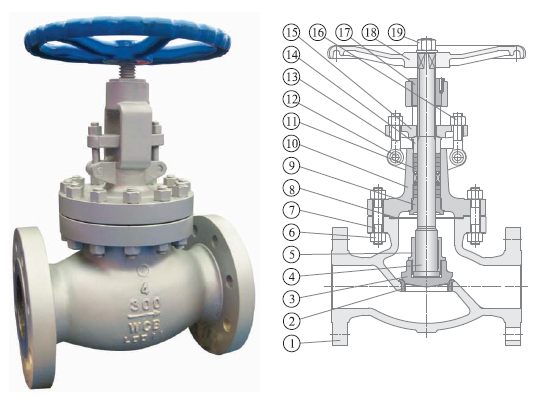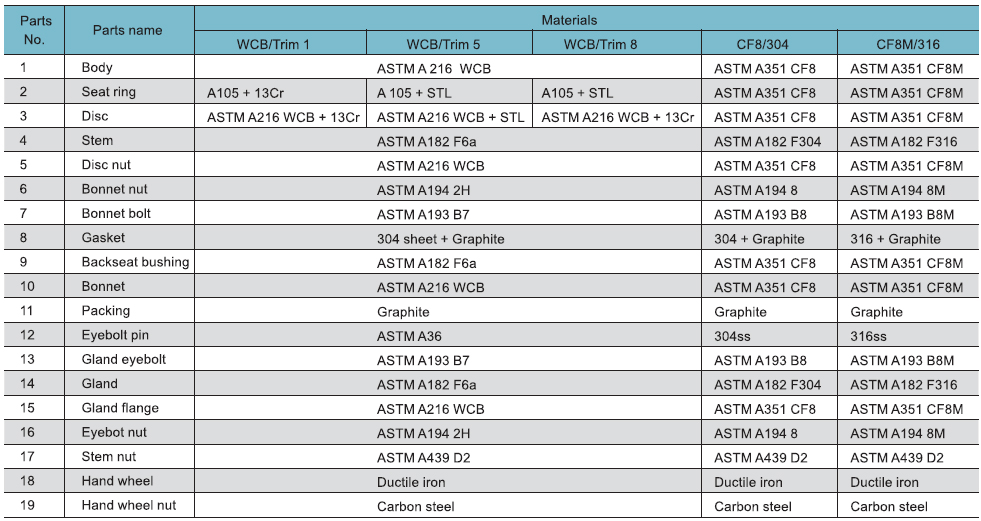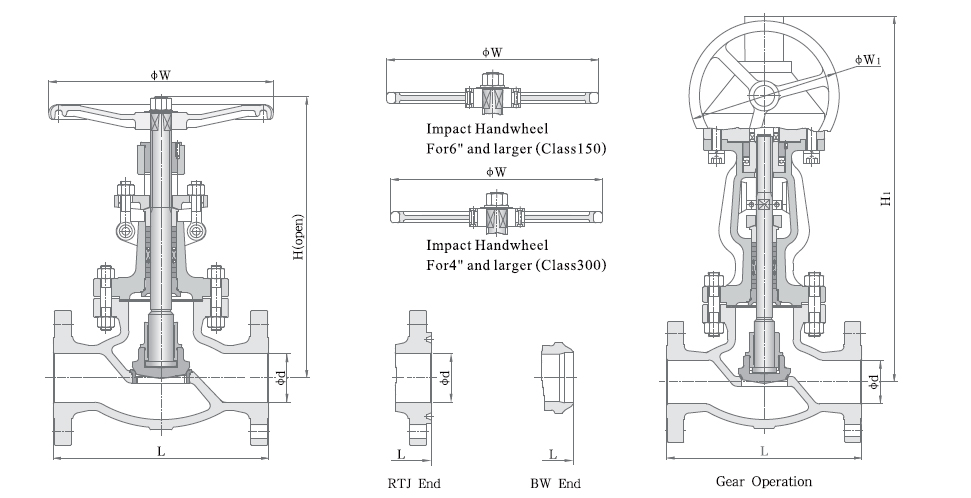Cast Steel Globe Valve
GLOBE VALVE
Cast Steel Globe Valve
Standards
- Design and Manufacture: Cast steel globe valve to BS1873 and ASME B 16.34; Forged steel globe valve to API 602. Inspection and Test: API 598.
- End flange dimension: ASME B 16.5 BW end dimension: ASME B16.25.
- Socket – weld dimension: ASME B16.11.
- Face to face and end to end: ASME B16.10.
- Pressure – temperature ratings: ASME B16.34.
The Features Of Globe Valve
Bolted Bonnet; Outside Screw and Yoke; Rising stems; Metallic seating surfaces.
Body And Bonnet Connection
The body and bonnet of Class150 ~ Class900 check valves are usually with studs and nuts. And the body and bonnet of Class1500 ~ Class2500 check valves are usually of pressurized seal design.
Gasket of Cover Flange
Stainless steel + flexible graphite wounded gasket is used for Classl 50 and Class300 globe valve. Stainless steel + flexible graphite wounded gasket is used for Class600,and ring joint gasket is also optional for Class600.Ring joint gasket is used for Class900 globe valve. Pressurized seal design is used for Classl 500 ~ Class2500 globe valve.

Actuation
Hand wheel, Impact hand wheel & gear box Is usually used for globe valve actuation. Chain wheel and electric actuator can be also used for globe valve actuation if being requested by the customers.
Belleville spring Loaded Packing Impacting System
If being requested by the customer, the Belleville spring loaded packing impacting can be adopted for enhancing the durability and reliability of the packing seal.
Packing Seal
Molded flexible graphite is used for packing material. PTFE or combined packing material can be also used if being requested by the customer. The internal surface of the stuffing box, of which area is contacted with the packing, is of excellent finish (Ra 3.2 m). The stem surface, contacting with the packing, should be rolled and pressed after being precisely machined, so as to reach to the high finish and compactness (Ra 0.8! m) and ensure the reliable tightness of the stem area.
Back Seating Design
All our globe valves have the back seating design. เท most cases, the carbon steel globe valve is fitted with a renewable back seat. For stainless steel globe valve, the back seat is machined directly in the bonnet or is machined after welding. When the globe valve is at fully open position, the sealing of the back seat can be very reliable. However, as per the requirement of API, it is not advisable to add or change packing by the mean of back seating when the valve is pressure containing.
Seat
For carbon steel globe valve, the seat is usually forged steel. The sealing surface of the seat is spray welded with hard alloy specified by the customer. Renewable threaded seat is used for NPSQ10 globe valve, and welded on seat can be also optional if being requested by the customer. Welded on seat is used for NPSQ12 carbon steel globe valves. For stainless steel globe valve, integral seat is usually adopted. Or to weld hard alloy directly integrally. Threaded or welded on seat is also optional for stainless steel globe valve if being requested by the customer.
Stem Design
The stem is of integral forged design. The minimum diameter of the stem shall per the standard requirement.
Stem Nut
Usually, the stem nut is made of ASTM A439 D2. It is also can be made of copper ally if being requested by the customer. For large sized globe valve, rolling bearing is fitted at the two sides of stem nut เท order to minimize the open and close torque of the globe valve.
Special Globe Valve
Besides the common globe valves, SUNGO Company also makes cryogenic globe valve, bellow sealed globe valve, Jacketed globe valve, etc.
Standards
- Design and Manufacture : BS 1873 and ASME B16.34.
- Inspection and Test : API 598.
- End flange dimension : ASME B16.5
- BW end dimension : ASME B16.25
- SockeU-weld dimension : ASME B16.11 , ASME B16.10
- Pressure tempefature ratings : ASME B16.34

Parts and material list

Note: The chart above only lists out some common composition of steel globe valve parts. We may provide other different parts material composition according to the customer‘s request or the actual valve working condition.
Class 150 (JIS 10K)and Class 300 (JIS 20K) Cast steel Globe Valve


Class 600 & Class 900 Cast Steel Globe Valve


